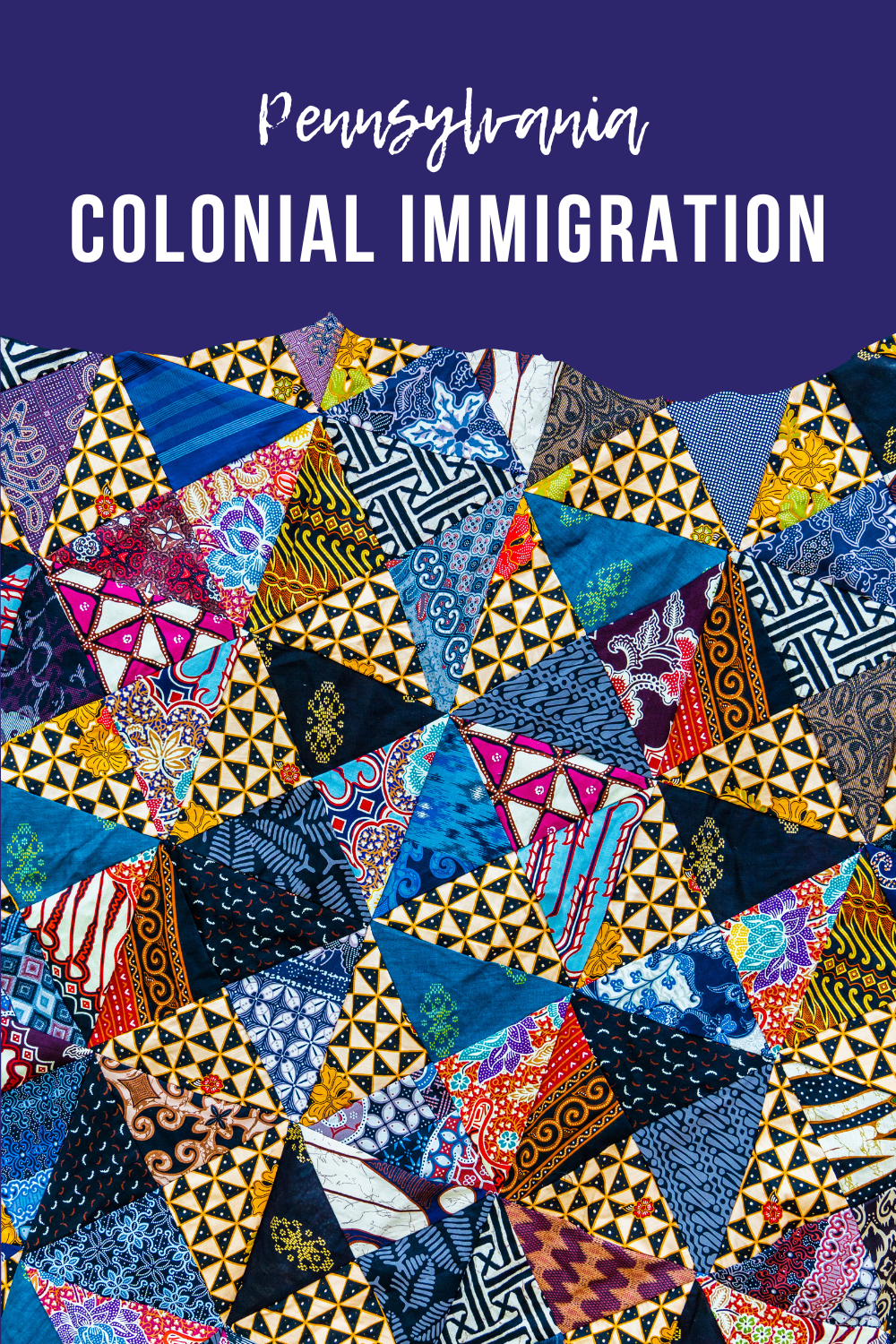Immigration to Pennsylvania Prior to 1800: A Timeline of Who Arrived and from Where
Knowing when a specific ethnic group arrived can help target research in records. Usually DNA is your first clue as to where (and when) to look.

The Pennsylvania colony had the most diversity in ethnicities of the thirteen colonies in America.
For genealogists tracing their family history through the colonial period of Pennsylvania, knowing which immigrant groups arrived and when is key to research. It is also key to linking ethnicity results in DNA testing to genealogical documentation. This article provides a brief timeline and framework to understand immigration prior to 1800.
Here is a list of the ethnic groups that made up early Pennsylvania along with where they lived and the time of their arrival.
Native American Indians
- Pre-1630s: Native American tribes, including Lenapes, Susquehannock, Nanticokes, Iroquois, and others, established both nomadic and permanent settlements throughout the Mid-Atlantic woodlands, specifically in the Delaware and Susquehanna River valleys and the western Ohio Country. Native Americans created economies of mutual exchange and engaged in warfare, intermingling across the region.
- By 1800: The majority of native peoples have been pushed to Ohio and points west. Those that remain in the state assume the identity of Europeans.

Swedish and Dutch (1630s – 1682)
- Swedes and Finns: Early settlers in the Delaware Valley, the geographic area 25 miles around today’s Philadelphia. Established the colony of New Sweden in the 1630s, which was absorbed by New Netherland in 1655.
- Dutch: Established settlements in the Mid-Atlantic region, particularly along the Delaware River, before relinquishing control to the English in 1664 and again to William Penn in 1682.
English and Quakers (1682 – Onwards)
- English Quakers: Led by William Penn, they began arriving in large numbers in 1682, establishing Philadelphia and surrounding counties.
- Other English Settlers: Included non-Quaker populations from England, contributing to the diversity of the colony.
Welsh (1682 – Onwards)
- Welsh Quakers: Arrived with William Penn and subsequently, settling in the "Welsh Tract" in Southeastern Pennsylvania, contributing to the agricultural and social development of the area.
Africans (1680s – Onwards)
- Close to 6,000 enslaved Africans and a small population of free blacks lived in the Province of Pennsylvania.
- Enslaved Africans: Utilized in various economic roles across Pennsylvania, including both cities and rural areas. Philadelphia, as the largest and wealthiest city in the colonies by the time of the Revolution, had a large population of enslaved people.
- Free Blacks: Close to 6,000 black people were either enslaved or free prior to 1800. Some free blacks were born in Pennsylvania and others moved up from the Maryland and further south.
Germans (1690s – Onwards)
- Germantown Settlers (1683): The first significant group of German Quakers and Mennonites in Pennsylvania, established Germantown.
- Palatines (1717 onwards): Large-scale migration of Germans from the Rhineland due to religious persecution and economic hardship, peaked in the mid-18th century. They traveled down the Rhine River to Amsterdam and sailed from there to Philadelphia.

French Huguenots (1690s – 1730s)
- Similar in religious belief to the Mennonites and Amish. Fled France after the revocation of the Edict of Nantes in 1685, seeking religious freedom. Their settlements in Pennsylvania were smaller and more scattered than other groups.
Scots-Irish (1700s – Onwards)
- Also known as the Scotch-Irish and Ulster Scots: Arrived in significant numbers around 1717, fleeing economic distress and religious conflict in Northern Ireland. They were instrumental in settling the Pennsylvania frontier.
Irish (1700s – Onwards)
- Irish Catholics and Protestants: Although larger waves of Irish immigration occurred in the 19th century during the time of the Famine, smaller numbers of Irish settlers arrived throughout the 18th century.
Other Ethnic Groups
While the above groups represent the primary European ethnicities to settle in Pennsylvania prior to 1800, there were undoubtedly smaller numbers of peoples from other parts of the world, reflecting the colony's reputation for religious tolerance and economic opportunity.
If you are a part of one of these more unique ethnic groups, I’d love to hear about it so I can learn more about who was here in Pennsylvania.
© 2019–2024 PA Ancestors L.L.C. and Denys Allen. All Rights Reserved.
